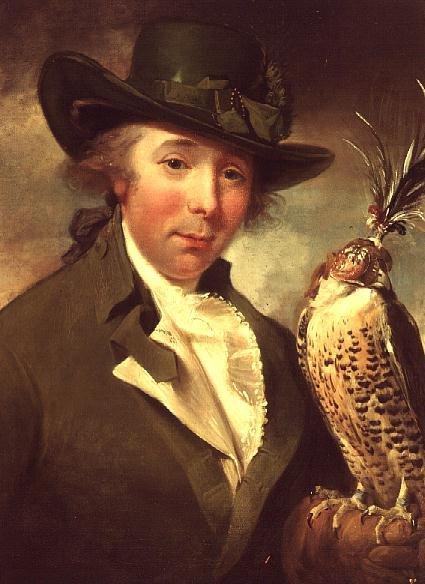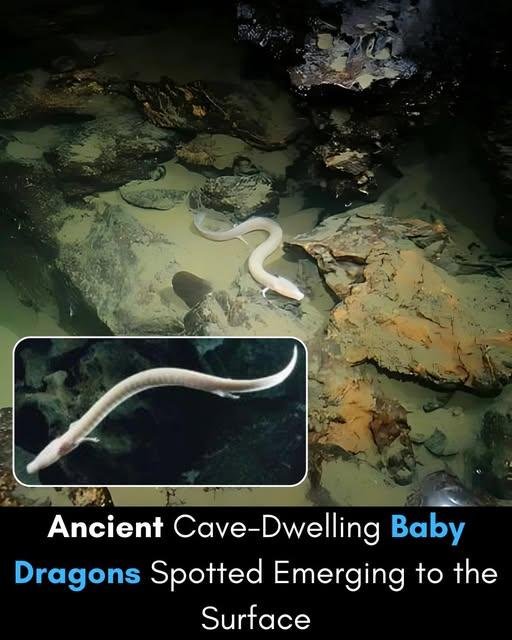"Federigo and His Falcon: A Tale of Love, Sacrifice, and Unexpected Fortune"
INRODUCTION
Giovanni Boccaccio’s The Decameron is a collection of stories told by noblemen and women escaping the plague in 14th-century Florence. Among them, Federigo and His Falcon explores love, sacrifice, and fate.
Federigo, once wealthy, spends all he has to win Monna Giovanna’s love, leaving himself with only his cherished falcon. When Monna Giovanna requests the falcon for her ailing son, Federigo unknowingly serves it as a meal. Moved by his sacrifice, she later marries him, rewarding his devotion. The tale highlights generosity and the unexpected twists of fate.
SUMMARY
Federigo, once a wealthy nobleman, spends all his fortune trying to win Monna Giovanna’s love, leaving himself with only his small farm and beloved falcon. When Monna Giovanna’s son falls ill and desires the falcon, she visits Federigo to request it. Unaware of her true intent, Federigo cooks the falcon and serves it to her as a meal. Upon realizing his sacrifice, Monna Giovanna is deeply moved. After her son’s passing, she marries Federigo, acknowledging his kindness and devotion. The story reflects themes of love, fate, and selflessness.
ANALYSIS
Boccaccio’s tale masterfully employs literary elements such as irony, symbolism, and characterization to reinforce its themes. The irony in Federigo’s sacrifice is particularly striking he unknowingly destroys the very thing Monna Giovanna came to request, highlighting the tragic misalignment between intention and consequence. The falcon, a symbol of nobility, devotion, and loss, becomes the ultimate representation of Federigo’s unyielding love. Additionally, Boccaccio’s storytelling, framed within The Decameron, follows his pattern of exploring fortune and virtue, demonstrating how destiny intervenes in unexpected ways.
Federigo’s motivations stem from his unwavering love for Monna Giovanna, a devotion so profound that he spends all his wealth attempting to win her favor. His final act sacrificing his last valuable possession for her comfort is not a calculated decision but an instinctive display of hospitality and love. Monna Giovanna, on the other hand, undergoes a transformation in her perception of Federigo. Initially indifferent, she comes to appreciate his sincerity and noble character, ultimately choosing to marry him despite his financial downfall. This shift in her character reflects a deeper moral lesson on genuine worth beyond material wealth.
The central themes of the tale sacrifice, fate, and love resonate across centuries. The story suggests that true generosity lies in giving without expectation, and that fate, however cruel, may still reward virtue in unexpected ways. Federigo’s sacrifice, though seemingly futile, ultimately secures his happiness. It challenges conventional ideas of prosperity, arguing that nobility is defined by integrity rather than wealth. This theme remains relevant today, reminding readers that love and selflessness often lead to fulfillment, even when the path is difficult.
PERSONAL RESPONSE
"Federigo and His Falcon" stood out to me because of its bittersweet irony and powerful message about love and sacrifice. The moment when Federigo unknowingly serves the very falcon Monna Giovanna came to request felt both tragic and deeply moving, reinforcing how love can sometimes manifest in heartbreaking ways. What I enjoyed most was the story’s exploration of selflessness Federigo gives without expecting anything in return, yet his perseverance is ultimately rewarded. It’s a tale that challenges conventional ideas about wealth and success, reminding readers that genuine virtue often leads to fulfillment. The emotional depth and moral lesson make this one of The Decameron’s most compelling stories.
CONCLUSION
The tale of Federigo and His Falcon remains a powerful testament to the enduring value of love, sacrifice, and virtue. Federigo’s selflessness, though seemingly futile, ultimately leads to fulfillment, reinforcing the idea that true nobility lies in character rather than wealth. The story’s themes are still relevant today, reminding us that generosity and integrity often bring unexpected rewards. In a world where material success is frequently prioritized, this tale challenges us to reconsider what truly matters relationships, kindness, and the ability to give without expectation. Its timeless appeal continues to inspire reflection on how love and fate shape our lives.
#TheDecameron
#MedievalLiterature
#LiteraryReview
INRODUCTION
Giovanni Boccaccio’s The Decameron is a collection of stories told by noblemen and women escaping the plague in 14th-century Florence. Among them, Federigo and His Falcon explores love, sacrifice, and fate.
Federigo, once wealthy, spends all he has to win Monna Giovanna’s love, leaving himself with only his cherished falcon. When Monna Giovanna requests the falcon for her ailing son, Federigo unknowingly serves it as a meal. Moved by his sacrifice, she later marries him, rewarding his devotion. The tale highlights generosity and the unexpected twists of fate.
SUMMARY
Federigo, once a wealthy nobleman, spends all his fortune trying to win Monna Giovanna’s love, leaving himself with only his small farm and beloved falcon. When Monna Giovanna’s son falls ill and desires the falcon, she visits Federigo to request it. Unaware of her true intent, Federigo cooks the falcon and serves it to her as a meal. Upon realizing his sacrifice, Monna Giovanna is deeply moved. After her son’s passing, she marries Federigo, acknowledging his kindness and devotion. The story reflects themes of love, fate, and selflessness.
ANALYSIS
Boccaccio’s tale masterfully employs literary elements such as irony, symbolism, and characterization to reinforce its themes. The irony in Federigo’s sacrifice is particularly striking he unknowingly destroys the very thing Monna Giovanna came to request, highlighting the tragic misalignment between intention and consequence. The falcon, a symbol of nobility, devotion, and loss, becomes the ultimate representation of Federigo’s unyielding love. Additionally, Boccaccio’s storytelling, framed within The Decameron, follows his pattern of exploring fortune and virtue, demonstrating how destiny intervenes in unexpected ways.
Federigo’s motivations stem from his unwavering love for Monna Giovanna, a devotion so profound that he spends all his wealth attempting to win her favor. His final act sacrificing his last valuable possession for her comfort is not a calculated decision but an instinctive display of hospitality and love. Monna Giovanna, on the other hand, undergoes a transformation in her perception of Federigo. Initially indifferent, she comes to appreciate his sincerity and noble character, ultimately choosing to marry him despite his financial downfall. This shift in her character reflects a deeper moral lesson on genuine worth beyond material wealth.
The central themes of the tale sacrifice, fate, and love resonate across centuries. The story suggests that true generosity lies in giving without expectation, and that fate, however cruel, may still reward virtue in unexpected ways. Federigo’s sacrifice, though seemingly futile, ultimately secures his happiness. It challenges conventional ideas of prosperity, arguing that nobility is defined by integrity rather than wealth. This theme remains relevant today, reminding readers that love and selflessness often lead to fulfillment, even when the path is difficult.
PERSONAL RESPONSE
"Federigo and His Falcon" stood out to me because of its bittersweet irony and powerful message about love and sacrifice. The moment when Federigo unknowingly serves the very falcon Monna Giovanna came to request felt both tragic and deeply moving, reinforcing how love can sometimes manifest in heartbreaking ways. What I enjoyed most was the story’s exploration of selflessness Federigo gives without expecting anything in return, yet his perseverance is ultimately rewarded. It’s a tale that challenges conventional ideas about wealth and success, reminding readers that genuine virtue often leads to fulfillment. The emotional depth and moral lesson make this one of The Decameron’s most compelling stories.
CONCLUSION
The tale of Federigo and His Falcon remains a powerful testament to the enduring value of love, sacrifice, and virtue. Federigo’s selflessness, though seemingly futile, ultimately leads to fulfillment, reinforcing the idea that true nobility lies in character rather than wealth. The story’s themes are still relevant today, reminding us that generosity and integrity often bring unexpected rewards. In a world where material success is frequently prioritized, this tale challenges us to reconsider what truly matters relationships, kindness, and the ability to give without expectation. Its timeless appeal continues to inspire reflection on how love and fate shape our lives.
#TheDecameron
#MedievalLiterature
#LiteraryReview
"Federigo and His Falcon: A Tale of Love, Sacrifice, and Unexpected Fortune"
INRODUCTION
Giovanni Boccaccio’s The Decameron is a collection of stories told by noblemen and women escaping the plague in 14th-century Florence. Among them, Federigo and His Falcon explores love, sacrifice, and fate.
Federigo, once wealthy, spends all he has to win Monna Giovanna’s love, leaving himself with only his cherished falcon. When Monna Giovanna requests the falcon for her ailing son, Federigo unknowingly serves it as a meal. Moved by his sacrifice, she later marries him, rewarding his devotion. The tale highlights generosity and the unexpected twists of fate.
SUMMARY
Federigo, once a wealthy nobleman, spends all his fortune trying to win Monna Giovanna’s love, leaving himself with only his small farm and beloved falcon. When Monna Giovanna’s son falls ill and desires the falcon, she visits Federigo to request it. Unaware of her true intent, Federigo cooks the falcon and serves it to her as a meal. Upon realizing his sacrifice, Monna Giovanna is deeply moved. After her son’s passing, she marries Federigo, acknowledging his kindness and devotion. The story reflects themes of love, fate, and selflessness.
ANALYSIS
Boccaccio’s tale masterfully employs literary elements such as irony, symbolism, and characterization to reinforce its themes. The irony in Federigo’s sacrifice is particularly striking he unknowingly destroys the very thing Monna Giovanna came to request, highlighting the tragic misalignment between intention and consequence. The falcon, a symbol of nobility, devotion, and loss, becomes the ultimate representation of Federigo’s unyielding love. Additionally, Boccaccio’s storytelling, framed within The Decameron, follows his pattern of exploring fortune and virtue, demonstrating how destiny intervenes in unexpected ways.
Federigo’s motivations stem from his unwavering love for Monna Giovanna, a devotion so profound that he spends all his wealth attempting to win her favor. His final act sacrificing his last valuable possession for her comfort is not a calculated decision but an instinctive display of hospitality and love. Monna Giovanna, on the other hand, undergoes a transformation in her perception of Federigo. Initially indifferent, she comes to appreciate his sincerity and noble character, ultimately choosing to marry him despite his financial downfall. This shift in her character reflects a deeper moral lesson on genuine worth beyond material wealth.
The central themes of the tale sacrifice, fate, and love resonate across centuries. The story suggests that true generosity lies in giving without expectation, and that fate, however cruel, may still reward virtue in unexpected ways. Federigo’s sacrifice, though seemingly futile, ultimately secures his happiness. It challenges conventional ideas of prosperity, arguing that nobility is defined by integrity rather than wealth. This theme remains relevant today, reminding readers that love and selflessness often lead to fulfillment, even when the path is difficult.
PERSONAL RESPONSE
"Federigo and His Falcon" stood out to me because of its bittersweet irony and powerful message about love and sacrifice. The moment when Federigo unknowingly serves the very falcon Monna Giovanna came to request felt both tragic and deeply moving, reinforcing how love can sometimes manifest in heartbreaking ways. What I enjoyed most was the story’s exploration of selflessness Federigo gives without expecting anything in return, yet his perseverance is ultimately rewarded. It’s a tale that challenges conventional ideas about wealth and success, reminding readers that genuine virtue often leads to fulfillment. The emotional depth and moral lesson make this one of The Decameron’s most compelling stories.
CONCLUSION
The tale of Federigo and His Falcon remains a powerful testament to the enduring value of love, sacrifice, and virtue. Federigo’s selflessness, though seemingly futile, ultimately leads to fulfillment, reinforcing the idea that true nobility lies in character rather than wealth. The story’s themes are still relevant today, reminding us that generosity and integrity often bring unexpected rewards. In a world where material success is frequently prioritized, this tale challenges us to reconsider what truly matters relationships, kindness, and the ability to give without expectation. Its timeless appeal continues to inspire reflection on how love and fate shape our lives.
#TheDecameron
#MedievalLiterature
#LiteraryReview


















